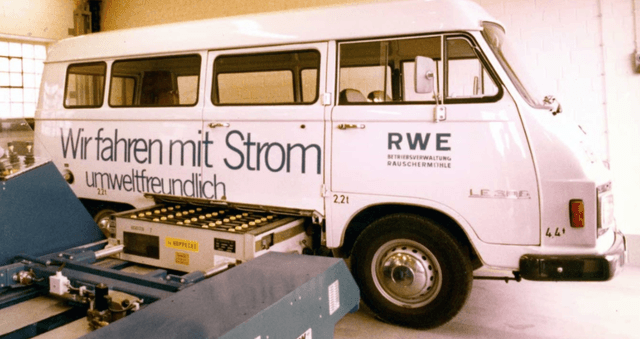"We drive with electricity"; early days at RWE. Source RWE
RWE Aktiengesellschaft (OTCPK:RWEOY) has a 120-year history as a major power company in Germany. Its history makes fascinating reading. It is complicated, with lots of twists and turns (including a major role in coal and nuclear power generation ... and even playing with electric cars) and its latest evolution is the result of a huge transaction in Germany with new definition for two major German companies: RWE and E.ON SE (OTCPK:EONGY) (OTCPK:ENAKF).
RWE has taken on the upstream renewable energy assets, while E.ON SE becomes power delivery and customer focused. If one looks for comparisons, RWE now looks like a renewable energy version of one of the oil and gas majors. It has a heavy emphasis on renewable power generation (especially wind) and an international focus. And it has an ambitious goal of neutral emissions by 2040. RWE has share performance that oil and gas majors would die for, being up 36% year on year. E.ON SE has a more modest share price performance, although it has survived 2020 with a 3% increase in share price year on year, after a dramatic fall at the start of the pandemic. Here I look at RWE's Q3 results to provide further information about investment in interesting renewable energy companies, flowing on from my comparison of Vestas Wind Systems (OTCPK:VWDRY) and Exxon Mobil (XOM).
If you are looking to internationalise your energy investment portfolio with a strong focus on offshore wind, RWE should be on your radar.
RWE used to be heavily focused on large base-load power generation with a core of coal and nuclear power assets. Government decisions in Germany foreshadowed the end of both of these industries some time ago, so it has had to reinvent itself and it did so by heavily
